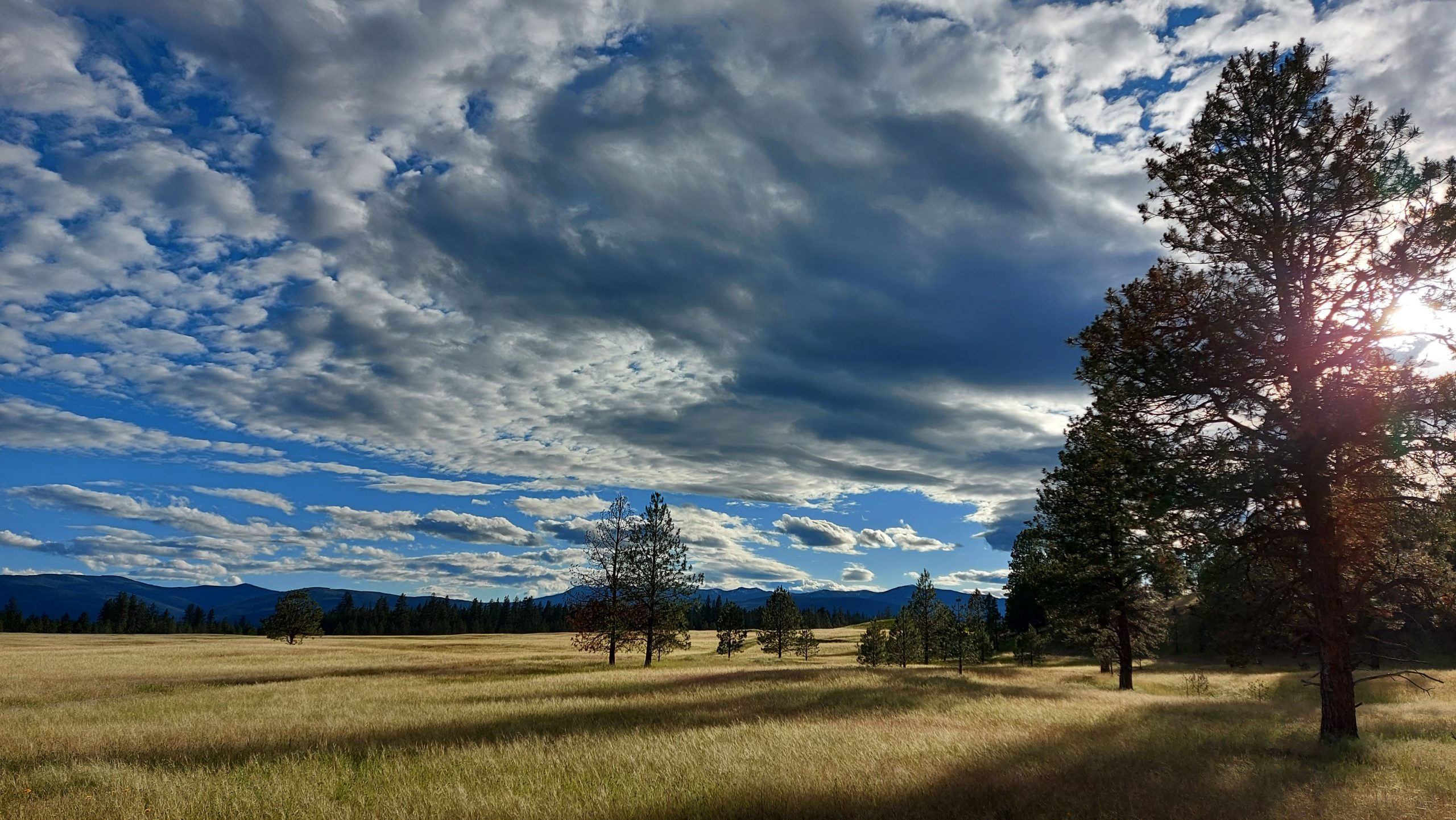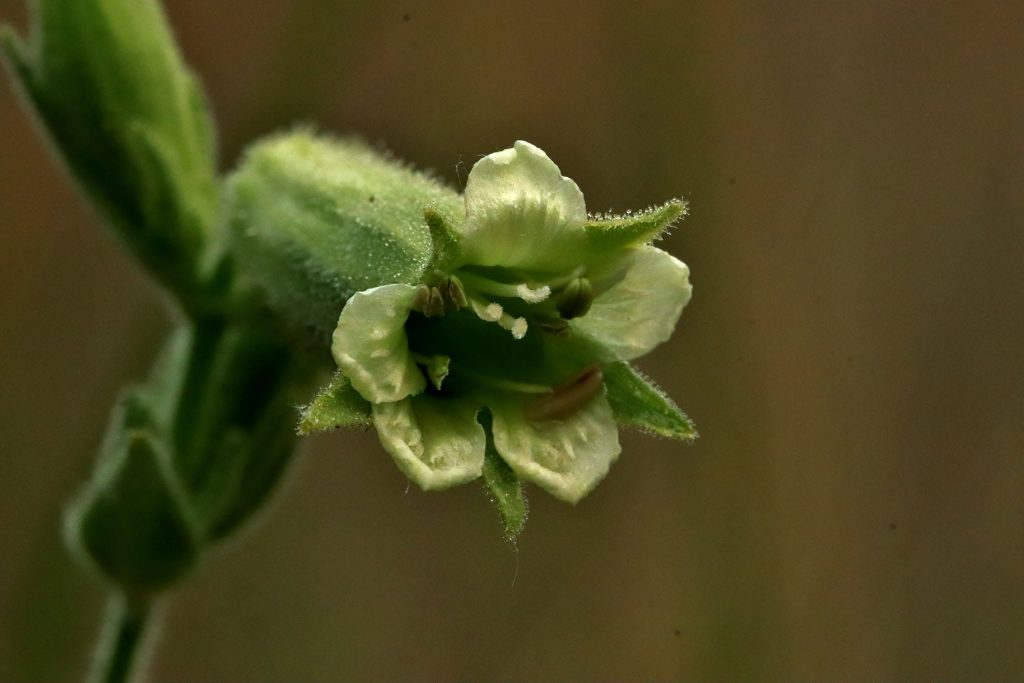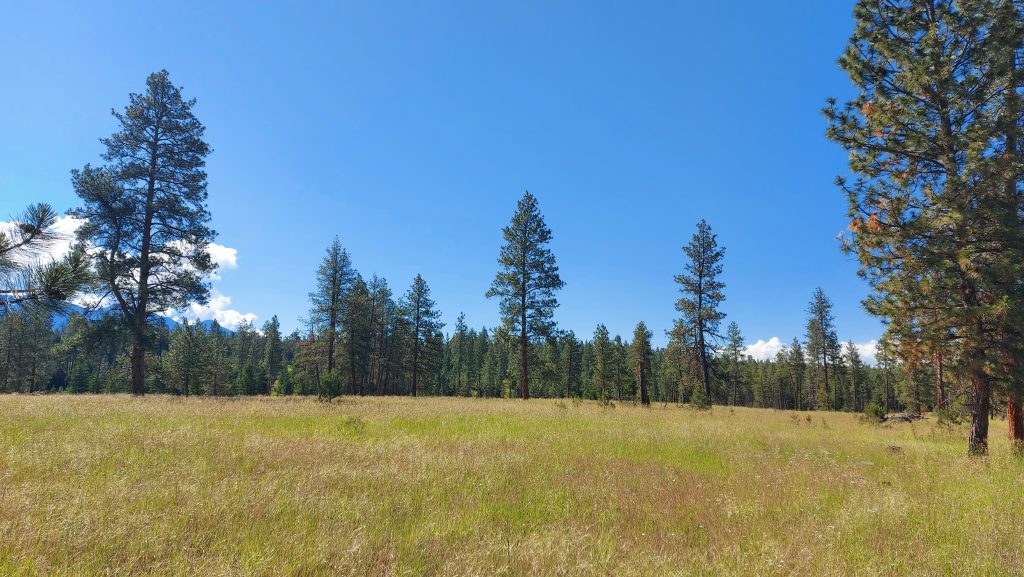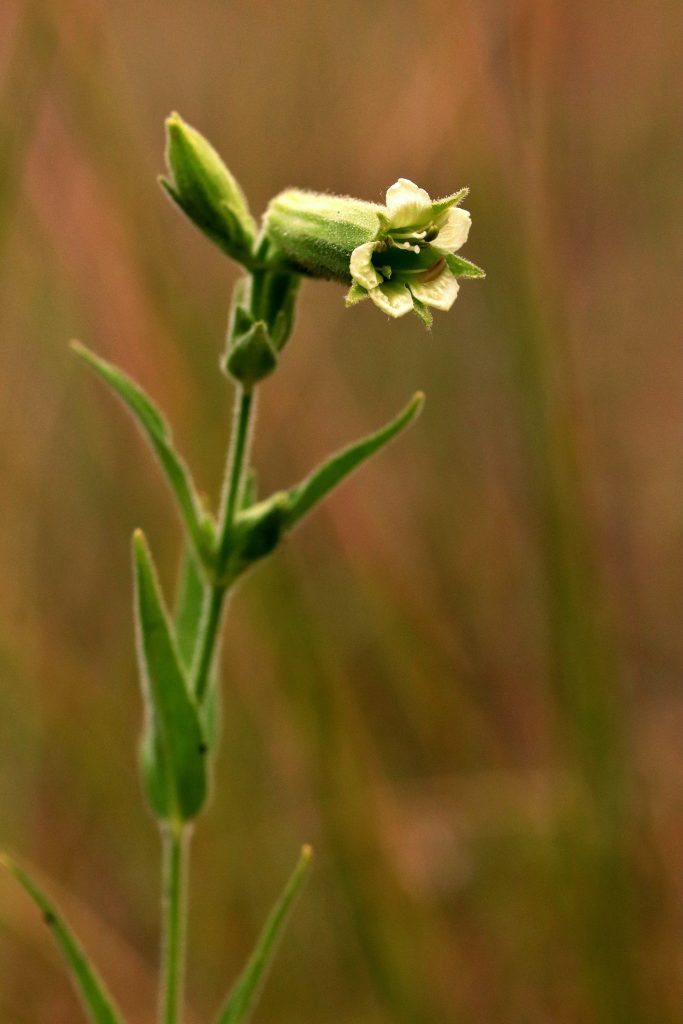
Par Ian Adams, coordinateur KBA de la Colombie-Britannique. Il s'agit d'une contribution au blog. Si vous avez une histoire sur un site, une espèce ou un écosystème KBA que vous aimeriez soumettre comme article de blog, veuillez contacter Peter Soroye (psoroye @wcs.org).
Le silène de Spalding est l’une des plantes les plus rares au Canada. Le seul endroit au Canada où elle pousse se trouve dans la zone clé pour la biodiversité de Yaq̓it ʔa·knuqⱡi’it – Tobacco Plains dans le sud-est de la Colombie-Britannique. Apprenez-en plus à propos de cette plante, de la KBA et des efforts de conservation des semences ici.

L’écologiste des forêts Randy Harris s’agenouille à l’ombre d’un pin ponderosa près d’une plante brune flétrie et observe attentivement les fleurs fanées toujours attachées à la branche séchée. Son butin : les graines de l’une des plantes les plus rares au Canada qui seront recueillies dans le cadre d’un nouvel effort de conservation en Colombie-Britannique visant à mettre en banque les semences de plantes rares ou d’importance culturelle.
Cette plante est le silène de Spalding, ou Silene spaldingiiet est endémique à la prairie palousienne, située dans la région semi-aride de l’arrière-pays du Nord-Ouest des États-Unis, à la jonction de la partie est des États de Washington et de l’Oregon ainsi que du centre de l’État de l’Idaho. Une population isolée croît également ici, dans les Tobacco Plains, une région de prairies et de forêts à couvert ouvert dans le sillon des Rocheuses qui prend naissance dans le nord-ouest du Montana et remonte juste au nord de la frontière avec la Colombie-Britannique, au Canada, où Randy sépare minutieusement les graines de la plante. On ignore si la plante avait une importance culturelle pour les Ktunaxa, le peuple autochtone de cette région, ou pour d’autres groupes, mais on sait que la plante est très rare.
C’est le seul endroit où on trouve le silène de Spalding au Canada, et la plus grande partie de sa population canadienne extrêmement réduite se trouve sur les territoires de la Première Nation de Yaq̓it ʔa·knuqⱡi’it, qui font 4290 ha et s’étendent vers le nord à partir de la frontière canado-américaine. Aujourd’hui, Randy se trouve sur des terres provinciales, non loin des territoires de la Première Nation. Toute l’aire de répartition de la plante au Canada est aussi une zone clé pour la biodiversité qui souligne l’importance du site au regard de la biodiversité nationale et internationale.

La collecte de semences s’inscrit dans une initiative menée par Carrina Maslovat, spécialiste en conservation des plantes au ministère de la gestion de l’Eau, de la Terre et des Ressources naturelles de la Colombie-Britannique, par le Partenariat pour la conservation du Douglas taxifolié côtierpar la pépinière de plantes indigènes Nupqu appartenant à des membres de la Nation Ktunaxa et gérée par ces derniers, par le jardin botanique de l’Université de la Colombie-Britannique et par de nombreux autres partenaires dans le but d’établir une banque de semences des espèces à risque et d’importance culturelle en Colombie-Britannique. Ces graines de silène de Spalding sont les premières à être déposées dans cette banque.
Apparaissant sur la liste des Species at Risk Act as espèces en voie de disparitionde la Loi sur les espèces en péril du gouvernement canadien, le silène de Spalding est une vivace modeste adaptée aux fréquents incendies de faible intensité qui réduisent la litière du parterre forestier. Aux États-Unis, où la majorité des plants de silène de Spalding poussent, l’espèce a été listée comme espèce menacée depuis 2001. La plante pousse d’une hauteur de 20 cm à 50 cm et produit une demi-douzaine de fleurs blanches qui apparaissent en juillet. La tige et les feuilles sont couvertes de poils collants, comme la plupart des espèces Silene d’où le nom commun anglais de « catchfly » (attrape-mouches). Au contraire de certaines autres plantes collantes, elle n’est pas carnivore. En fait, les poils collants serviraient à décourager les fourmis et les autres insectes de manger la plante.
Par le passé, les conditions de forêt à couvert ouvert privilégiées par la plante étaient maintenues par les Autochtones par le biais de pratiques de brûlage. Des recherches sur l’histoire des brûlages dans les Tobacco Plains montrent que les Ktunaxa, dont les Yaq̓it ʔa·knuqⱡi’it, allumaient régulièrement des incendies pour réduire le sous-bois forestier et permettre aux graminées et à d’autres plantes de se développer. À une fréquence de sept à quinze ans, un incendie passait là, amenant une vigueur renouvelée aux fétuques, aux graminées en touffe et aux fleurs sauvages comme le silène. Les pratiques coloniales de suppression des incendies autochtones et des régimes naturels des feux ont grandement modifié l’écologie de cet écosystème et ont mené au déclin de plusieurs espèces, dont le silène de Spalding. Sans ces incendies de basse intensité fréquents, la quantité de carburant augmente, et l’inévitable incendie de plus grande ampleur détruit les plantes et le sol organique dont elles ont besoin.
Pour combattre cette dégénérescence, les membres de la communauté Yaq̓it ʔa·knuqⱡi’it ont mis en place un programme de restauration intensif pour réduire le couvert forestier, restaurer les milieux humides et réintroduire les feux de faible intensité là où c’est possible. Plus largement, le Programme de restauration des écosystèmes du sillon des Rocheuses vise des retombées similaires. Ce travail est toutefois lent et coûteux, et aboutit souvent à des résultats mitigés. Malgré tout, les activités de surveillance menées en 2024 sur le territoire de la Nation ont dévoilé une hausse marquée, alors qu’on y a retrouvé des centaines de plants de silène.
Ramener la pratique des feux dans ce paysage ne produit toutefois pas les résultats escomptés puisque, la plupart du temps, des plantes invasives colonisent ces sites et prennent la place des espèces indigènes comme le silène. Le silène tolère le pâturage léger, mais un pâturage trop important réduit la viabilité de la plante et peut mener à l’effondrement des populations là où les troupeaux sont nombreux.

Ces menaces et la distribution très limitée de l’espèce renforcent l’importance de la collecte de graines qu’effectuent Randy Harris et Carrina Maslovat. Le fait que la population de silène de Spalding des Tobacco Plains au Montana et en Colombie-Britannique soit isolée de la partie principale de la prairie palousienne suggère des aspects génétiques uniques. Ou tout du moins, la rareté de la plante justifie la récolte de graines comme option de secours si un désastre survenait et que la population disparaissait.
Les semences que cherche Randy sont minuscules. Le travail est méticuleux et prend heureusement place à l’ombre du pin ponderosa. Randy place les graines dans un contenant qu’il agite pour les séparer de leur capsule sèche avant de les placer dans de petites enveloppes soigneusement identifiées et de les envoyer au Centre national de semences forestières au Nouveau-Brunswick. Ce centre a accepté de conserver les semences jusqu’à la construction d’un établissement provincial. Le travail de Randy a été soutenu par la biologiste régionale Lindsay Anderson et par la Stratégie d’investissement basée sur la terre (LBIS) de la province, qui soutient également les actions de rétablissement des espèces en péril et qui fait partie du plan régional d’implantation des plantes rares et en voie de disparition.
La zone clé pour la biodiversité de Yaq̓it ʔa·knuqⱡi’it – Tobacco Plains reflète l’importance écologique de la région par sa contribution à la biodiversité mondiale. Le silène de Spalding répond aux critères KBA et aux seuils mondiaux et, par sa présence la plus nordique de l’espèce, occupe une place importante à l’heure des changements climatiques. Les semences récoltées ici pourraient un jour jouer un rôle vital dans la conservation.
